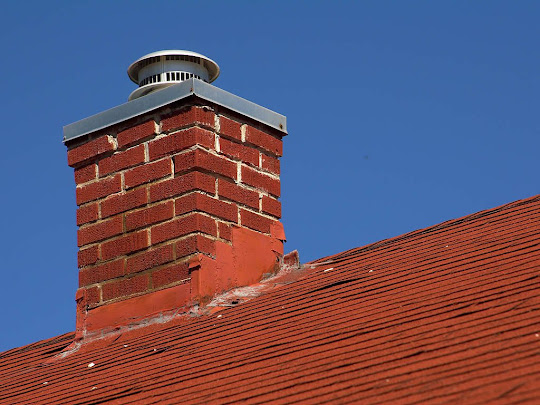What is a Chimney Liner?
The thing that protects your flue is chimney liners. Usually, they are made up of clay or an alloy of aluminium. They protect your flue masonry from cooling and heating in addition to eliminating hazardous gases from your home and protecting it from the heat. But damage and cracks are still a possibility. The risk of combustion byproducts returning to your home arises if your chimney fails to have a liner installed. As complementary as shoes and laces are chimney liners and chimneys.
If you neglect to put in one, your living room might be filled with dangerous substances and carbon monoxide through your chimney. With old and damaged chimney liners, you’ll also notice a difference. Creosote and moisture buildup may lead to damage to your chimney liners.
Is it an essential component?
During wintertime, chimneys and other heating appliances provide a warm and efficient method to add warmth to your house; yet, to fully benefit from this affection, the chimney must be in excellent condition. Your home heating system’s efficiency, security, and proper functioning may be endangered by damaged parts.
A chimney flue liner is an essential component of your chimney. It is crucial to
- - Moving smoke and combustion products outside of your home’s venting.
- - Protecting the chimney chase, surrounding masonry, or woodwork from these hazardous substances.
- - Directing heat outside helps minimise the risk of house fires.
It’s a challenging job, and chimney liners can fail with time and need to be replaced to be functioning.
Keep Your Liner Appropriately Sized
Updating your previous fireplace with a new gas insert is an ordinary way to enhance your home’s energy efficiency. It is important that the flue size and insert size match for maximum efficiency from your new fireplace insert. The flue of a fireplace insert ought to be a suitable size, but A Step in Time Chimney Sweeps can install a custom-sized chimney liner to solve this issue. Masonry chimneys tend to be considerably bigger than fireplace inserts. In case your current hearth appliance’s flue is incorrectly sized, we can also carry out this service.
Several crucial parts, such as the liner, must be installed for your chimney to operate securely and effectively.
Frequently Asked Questions Regarding Chimney Liners
How frequently should my chimney liner be replaced?
A variety of factors, such as the kind of liner, the type of fuel used in your fireplace, and how frequently you use it, affect how frequently you need to replace your chimney liner. In general, it’s best to have an expert, like us, evaluate your chimney once a year. We can determine the state of your liner and, if required, suggest replacing it.
Is it feasible to do a DIY chimney liner installation?
It is always advisable to hire a professional, yet it is technically feasible to install a chimney liner yourself.
Ineffective installation may increase the risk of a fire, exposing people to hazardous gases, and resulting in inefficiency. A qualified chimney service will ensure that the liner is put in securely and correctly.
Why does the chimney liner’s size matter?
The secure and efficient operation of your heating appliance is dependent on the size of the chimney liner. A liner with the right size ensures the best possible airflow for burning, minimises creosote buildup and successfully releases the produced gases, all of which minimise the likelihood of carbon monoxide leakage into your house.
Can I use a chimney liner of the same size for a fireplace of a different type?
Not usually. The chimney liner’s size has to match the appliance’s outflow hole. Different chimney liners may be required for different types of fireplaces since they might have different exhaust hole sizes, like wood-burning stoves and gas-burning fireplaces.
Safe Liner Installation
As a rule, the installer has to verify that your chimney is free of imperfections and suitable for the use for which it was built. Upon examining your chimney, the installer could find that lining it is the only way that fulfils this requirement. This can be the only way of ensuring a legal and safe installation.
The installer must cover the chimney with a suitable material if there’s an opportunity that substances could leak into your property. It is possible to pick from a variety of liner systems. Flexible stainless steel is the most widely used type.
Any repair that takes place on your chimney, such as installing a new chimney liner, along with installing a new heating appliance is regarded as a controlled operation and needs to be performed by a qualified individual, such as A Step in Time Chimney Sweeps. Alternatively, the agency in charge of building control at your local authority must approve it.
Can I clean the chimney liner myself?
Some homeowners ask, and almost all of the time, the answer is no. The reason is that homeowners lack the tools and materials required to thoroughly clean a tall liner. Since there is no means for a person to go down inside the liner, it would be difficult to see the entire quantity of the creosote buildup, not even with the most advanced equipment. Experts can see exactly what they’re doing inside a chimney liner at all times thanks to visual help.
Even if the homeowner has all the tools required to finish the task, there is one thing they simply do not have: the ability to detect damage in its early stages and suggest the most effective method to repair it. Certified chimney sweeps maintain an eye out for issues that include erosion, rusting, cracking, and other fears that may ultimately lead to dangerous situations and costly repairs during a cleaning.
.jpg)
.jpg)
.jpg)

Comments
Post a Comment